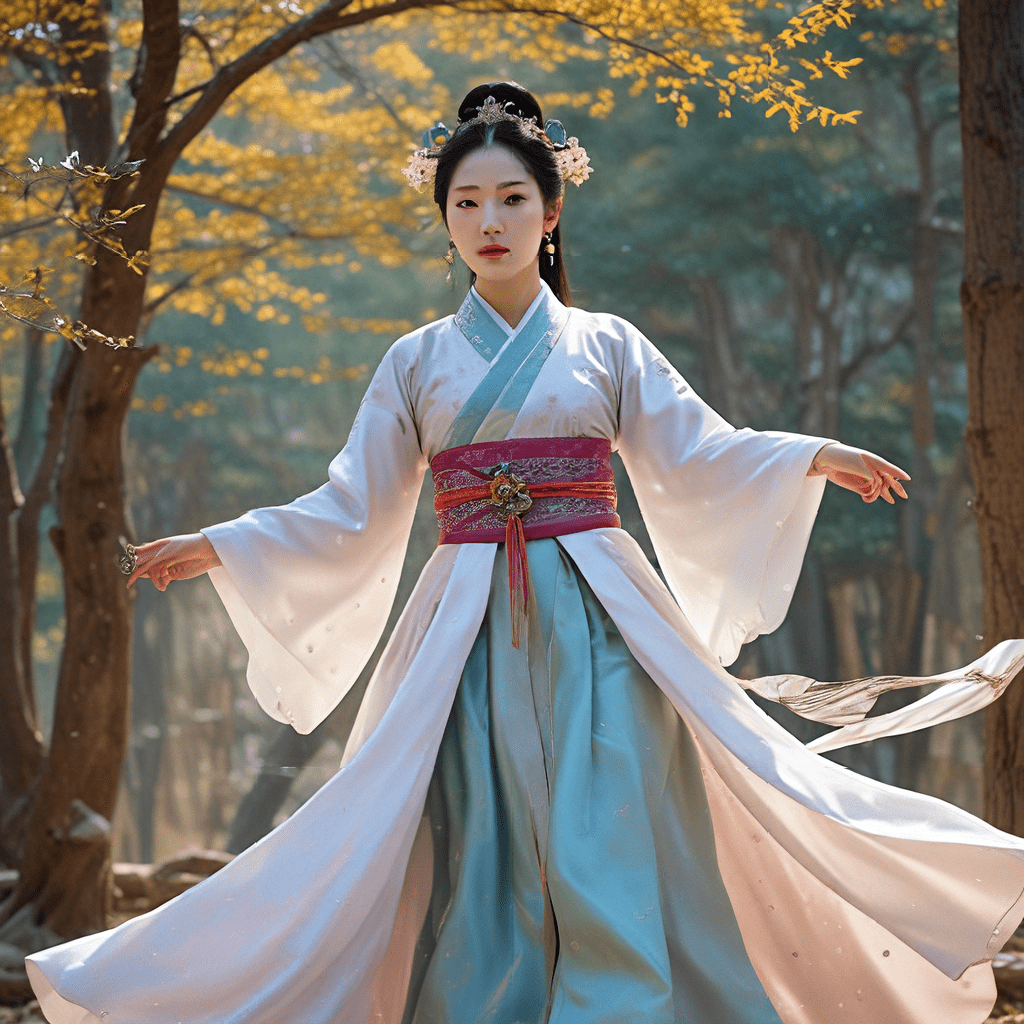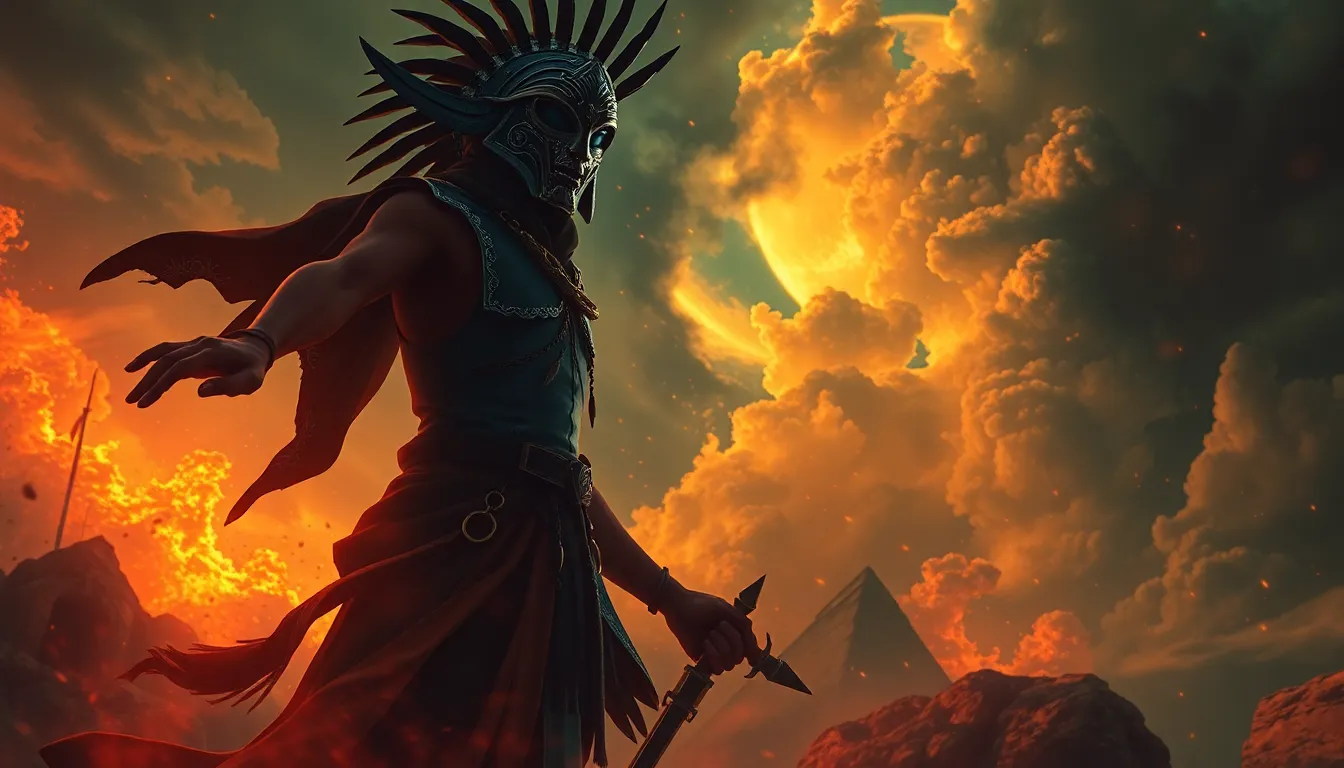Princess Pyeonggang: A Korean Folklore Legend
The Historical Setting: A Time of War and Political Intrigue
The legend of Princess Pyeonggang unfolds against the backdrop of ancient Korea, a time marked by fierce rivalries between warring kingdoms and relentless political intrigue. The story is set during the Goguryeo period, a powerful kingdom that dominated the Korean peninsula for centuries. During this time, Goguryeo faced constant threats from neighboring kingdoms, including Baekje and Silla. The struggle for dominance, coupled with the complex power dynamics within the Goguryeo court, provided a fertile ground for myths and legends that reflected the anxieties and aspirations of the people.
The Mythical Origins of Princess Pyeonggang: Daughter of a Demon King
At the heart of this captivating tale lies Princess Pyeonggang, a figure who embodies both feminine strength and divine power. The legend paints a vivid picture of her extraordinary origins. Pyeonggang was not born of human parents, but was the daughter of a powerful demon king named Dangun, the mythical founder of Gojoseon, the first Korean kingdom. Legend has it that Dangun, seeking to unite the Korean people, descended from heaven to establish Gojoseon. His union with a mortal woman resulted in the birth of a line of powerful, yet often troubled, rulers. Pyeonggang inherited her father’s strength and cunning, but her human mother instilled in her a deep compassion for the people.
Pyeonggang’s Transformation: From Princess to Warrior Queen
Despite her divine heritage, Pyeonggang’s life was far from idyllic. Born into a time of intense conflict, she was forced to confront the harsh realities of war and political manipulation. As a princess, Pyeonggang received a rigorous education in martial arts, strategy, and statecraft. She excelled in all these pursuits, displaying a keen intellect and remarkable strength. As a young woman, she transformed from a delicate princess to a fierce warrior queen. This transformation was not just physical; it was a reflection of her evolving spirit.
Pyeonggang’s Love for On Dal: A Tale of Forbidden Romance
Pyeonggang’s story is not only a tale of political intrigue and warfare but also a poignant love story. The legend tells of her forbidden romance with On Dal, a courageous and selfless warrior who was known for his unwavering loyalty to Goguryeo. Their love was a testament to their shared ideals and their determination to protect their homeland. However, their relationship was fraught with challenges. Pyeonggang, the daughter of a demon king, was considered unsuitable for a mortal like On Dal. Their love defied societal norms, making their journey even more captivating.
The Role of the Gods and Spirits in Pyeonggang’s Life
Throughout her life, Pyeonggang was guided and influenced by the gods and spirits of the Korean pantheon. Her divine lineage connected her to the supernatural realm, granting her access to mystical powers and guidance. As a child, she was protected by the spirits of the mountains and the rivers, granting her strength and resilience. In times of need, she sought the counsel of the guardian spirits who appeared to her in dreams and visions. The supernatural forces in Pyeonggang’s life contributed to her aura of mystery and made her a powerful figure in Korean folklore.
The Battle for the Throne: Pyeonggang’s Rise to Power
The legend of Princess Pyeonggang chronicles her rise to power, a journey filled with trials and tribulations. As a young woman, she was thrust into the center of the political arena, vying for the throne of Goguryeo. Her claim to the throne was contested by those who saw her divine lineage as a threat, and her gender as a barrier to leadership. However, Pyeonggang's determination and her unwavering belief in her people's future fueled her ambition. She skillfully navigated the treacherous waters of court politics, employing her wit and strategic prowess to outmaneuver her rivals. Pyeonggang also proved to be a formidable military leader. She led armies into battle, demonstrating her tactical brilliance and inspiring her soldiers to unwavering loyalty. Her victories on the battlefield solidified her claim to the throne and established her as a powerful ruler.
The Legacy of Princess Pyeonggang: A Symbol of Strength and Courage
The legend of Pyeonggang's reign is a testament to her strength and courage. She is remembered as a wise and just ruler who dedicated herself to the welfare of her people. During her reign, she oversaw a period of prosperity and cultural flourishing in Goguryeo. Her story has resonated with generations of Koreans, inspiring them with her unwavering resolve and her unwavering commitment to justice. Pyeonggang remains a powerful symbol of leadership, courage, and the resilience of the Korean people. She embodies the archetype of the warrior queen, a figure who defies societal expectations and carves her own path to greatness.
Theories on the Historical Basis of the Legend
While the legend of Princess Pyeonggang is rooted in folklore, scholars believe that there may be a historical basis to the story. Some historians suggest that Pyeonggang was based on a real Goguryeo queen who ruled during the 6th or 7th century AD. The historical evidence, however, is scant and fragmented. The legend itself is likely a blend of historical fact, embellished with mythical elements, creating a compelling and enduring story. Regardless of the historical basis, the legend of Princess Pyeonggang reflects the ideals and aspirations of the Korean people during a turbulent period in their history.
Pyeonggang as a Representative of Korean National Identity
The enduring popularity of the legend of Princess Pyeonggang speaks to her importance in shaping Korean cultural identity. She is celebrated as a national heroine, symbolizing strength, resilience, and a deep connection to the land. The legend of Pyeonggang is woven into Korean storytelling traditions, appearing in countless folktales, poems, and historical dramas. She is often depicted in art and literature, reinforcing her symbolic significance in Korean national identity.
The Evolution of the Legend Over Time: Adaptations and Reinterpretations
The legend of Princess Pyeonggang has evolved over time, reflecting the changing social and cultural contexts of Korea. Throughout the centuries, the story has been adapted and reinterpreted in various forms of art, including literature, theatre, film, and television. Modern adaptations often address contemporary issues, exploring themes of gender, power, and the complexities of leadership. The legend's enduring popularity testifies to its ability to resonate with audiences across generations, inspiring and captivating with its timeless themes of love, courage, and the pursuit of justice.
FAQ
Q: What is the historical setting of the Legend of Princess Pyeonggang?
A: The legend is set during the Goguryeo period in ancient Korea, roughly between the 3rd century BCE and the 7th century CE.
Q: What is Princess Pyeonggang's mythical origin?
A: Pyeonggang is said to be the daughter of Dangun, the mythical founder of Gojoseon, the first Korean kingdom. Her father is a powerful demon king, while her mother is a mortal woman.
Q: What is the significance of Pyeonggang's love story with On Dal?
A: Their relationship, forbidden due to their differing backgrounds, speaks to the themes of love defying societal expectations and the strength of their shared ideals.
Q: What are the main themes explored in the Legend of Princess Pyeonggang?
A: The legend explores themes of leadership, power, courage, resilience, and the resilience of the Korean people.
Q: How does the legend of Princess Pyeonggang reflect Korean national identity?
A: The legend celebrates her as a national heroine, symbolizing strength, resilience, and a deep connection to the land. Her story has been woven into Korean storytelling traditions for centuries.


